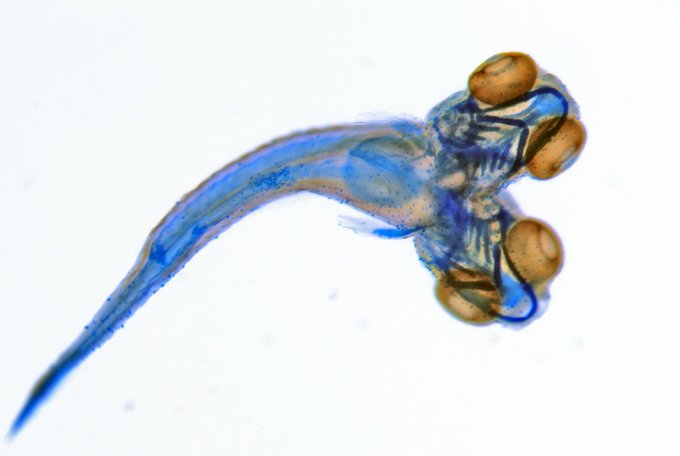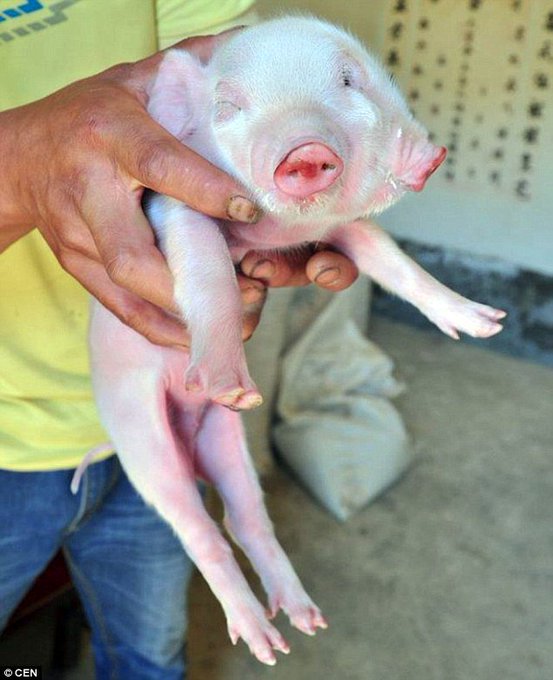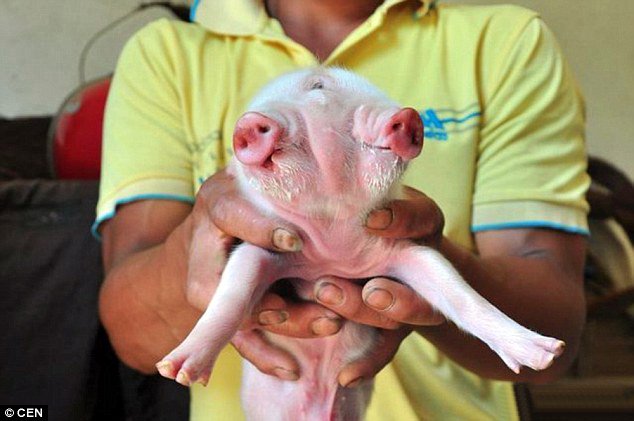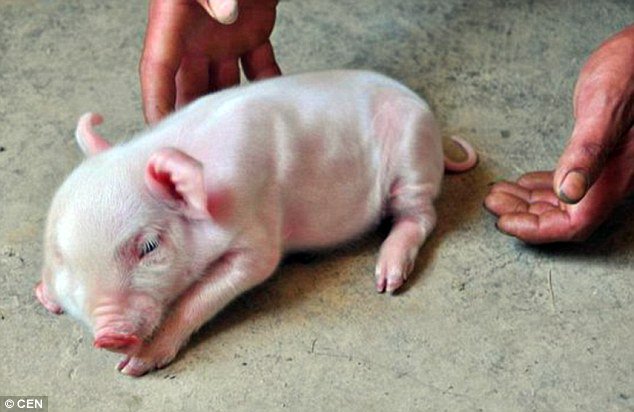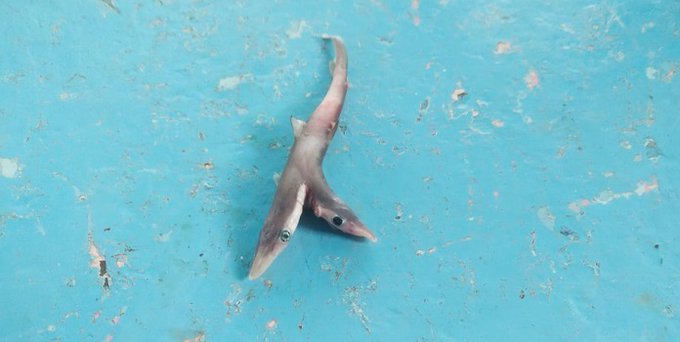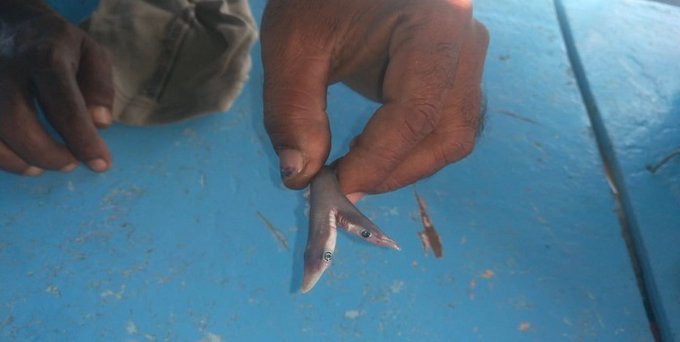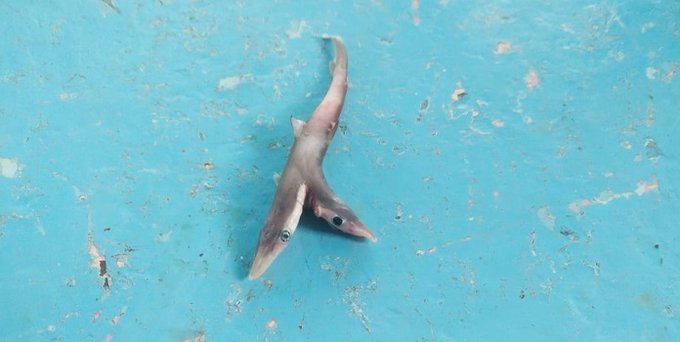It’s no secret that the animals of our world come in all shapes and sizes. But even within single species or subspecies, sometimes nature and genetics start seeing double, resulting in something that usually seems limited to the realms of mythology: two-headed animals!
From the strangely adorable to the truly nightmarish, coming up are some of the weirdest two-headed animals ever seen.
Science Behind Two-Headed Animals
It’s probably not a huge surprise to learn that a creature being born with two heads instead of one, a condition known as bicephaly, is incredibly rare.
Given that very few wild animals born with two heads, or two faces, survive long enough to be spotted by humans, it’s hard to determine exactly how common bicephaly is, though very rough estimates place the figure at around one in 100,000 births. So how exactly do creatures end up with two noggins? Well, bicephaly usually occurs when an early embryo splits in an incomplete manner.
Normally, twins form when a fertilized egg divides, producing a second embryo with the same genetic information.
Occasionally, this process of division is interrupted due to temperature or chemical issues, resulting in an embryo which is only partially divided. The two embryos develop, physically connected, sometimes at the head, sometimes at the face, and sometimes at the body. Often, once they develop, these two-faced animals share one or several internal organs, occasionally even including the brain, and sadly, though unsurprisingly, upwards of 60% are stillborn, or die shortly after birth. Even if their shared organs all function correctly, seeing as bicephalic animals usually have two brains in their heads, each brain often only has access to certain limbs, which as you can imagine, is pretty problematic. Though the extent to how much control each brain has varies in each case, the constant struggle to coordinate limbs and move together in a straight line leaves them unable to effectively find food, and vulnerable to predators in the wild.

Even more tricky is the fact that, with some two-headed animals, both brains actually have full control, meaning their muscles are constantly receiving mixed signals simultaneously, making coordinated movement almost impossible. It’s not exactly an easy existence, but now that we know how these odd creatures exist, let’s check out what life is like for some of the strangest specimens.
Pig With Two Snouts
One two-headed creature that’s not to be snorted at is this little piggie with two snouts. With two mouths to feed, this pig was born on a farm in Hunan, China back in 2011.
Watch it! Piglet born with 2 snouts, 3 eyes by New China TV The poor porker was unable to suckle with the weight of two heads, but each brain and snout were intact enough to be fed by the bottle. Despite having trouble eating, the piglet miraculously had no health complications, and no news was subsequently reported of its untimely demise, which is always nice!
However, aside the ability to enjoy the smell of freshly baked bread twice as much as the rest of us, with the bicephalic bros reportedly getting pushed around by other pigs on the farm, two heads still didn’t seem to work out as much of an advantage.
Another pig with snouts for two was born on a farm in northwest China, 4 years earlier, ironically, during the Year of the Pig, and was taken as a lucky omen. Despite that cycloptic eye in the center of its head being non-functional, given that it’s actually two incomplete eyes fused together, the other two eyes work just fine.
More recently, in May 2020, another
double-headed pig was born in Iloilo, in the Philippines. Only this time, their split embryo had left them with four eyes and an ear slap-bang in the middle of their shared forehead. An excited farmer nicknamed the little guys "Co-Pig" to bring his family “luck” during the covid pandemic. But sadly, the farmer’s “lucky charm” passed away after four days, which seems morbidly in character for the year that was 2020.
As hinted previously, surviving with a condition like bicephaly is incredibly rare. The partially developed, split body is susceptible to almost endless connected abnormalities and complications in the cardiovascular, neural, or digestive systems, making it nearly impossible for the bodies of animals like our little pig-pals to do vital jobs. For the Co-Pig twins, the unusual formation of their skulls obstructed the development of their brains, leaving them too weak and uncoordinated to survive. Which is of course very sad, but it doesn’t stop them being adorable.
Two-Headed Loggerhead Turtle
Some bicephalic animals come in smaller, and even cuter, packages. In August 2019, a tiny, two-headed loggerhead turtle was found on South Carolina’s Hilton Head Island beach by a group watching the year’s hatchlings along the shore.
For sea turtles, in general, only about one in 1,000 to 10,000 make it to adulthood, according to the Sea Turtle Conservancy. And sadly, these two-headed turtles couldn’t swim or even move in a straight line because their flippers were controlled by separate heads, giving them even slimmer chances. What’s more, their upper shell was malformed, making it even harder to travel smoothly and stay protected. However, not long after they were found, they were released back into the ocean. With, technically, no confirmation of their demise, let’s just assume they’re still out there somewhere, healthily and happily swimming in circles.
Janus Cats
These feline oddities are known as Janus cats, named after the Roman god with two faces. One, or two, of the world’s most renowned Janus cats, are a pair known as Frank and Louie or Frankenlouie.
This Janus cat had three eyes, two noses and two mouths. This specific type of facial deformity, sometimes known as diprosopus, is usually caused by an incredibly rare congenital disorder called
craniofacial duplication.

In cases like this, there is excessive hyperactivity coming from something called the SHH gene, which commands the body to produce proteins that control how the face, brain, and skull develop. This can result in the formation of two faces, and sometimes two brains, on a single head. Given the non-symmetrical way Frankenlouie’s face formed as an embryo, their middle eye didn’t work properly, and they had just one functional mouth. Louie had no bottom jaw to feed properly, so Frank was in charge of the chewing and swallowing. Strangely, though, despite the owners giving each face its own name, there was only one brain and stomach between them. This meant, thankfully, there was no fighting for control. Everything was pleasantly coordinated by a single brain, so, for a long time, Frankenlouie was in great health, even strong enough to play with other cats. While Janus cats almost never survive long because of problems developing their oesophagus, making it difficult to swallow and digest food, Frankenlouie was an anomaly with no such issues, and survived far beyond the usual length of a Janus life.
First Person: Frank and Louie, the Two-faced Cat by Associated Press
In 2014, Frankenlouie passed away from cancer at the age of 15, but not before copping the Guinness World Record title for the longest-lived Janus cat. I guess, where regular cats only have 9 lives, Frankenlouie must’ve had 18 to keep him alive so long in spite of it all?
Todd Ray's Two-Headed Collection
If you’re starting to get a soft-spot for all things two-headed, I guarantee you’ve got nothing on a man named Todd Ray. Todd owns the largest collection of two-headed animals in the world, and a favorite from his Los Angeles collection was a double-domed Eastern Box turtle, found in 2011.
The two conjoined turtles, called Squirt and Crush, were minuscule at six weeks old and could barely move. Things were so bad for them that Ray considered doing something he had never done before, getting his pets surgically separated.
However, their bodies were connected at the plastron, the underside of the shell, which cannot grow back once severed, so keeping them alive after the separation wouldn’t be easy. But even though Ray came close to getting a vet to operate, the conjoined pair tragically died before it could go forward.
On a lighter note, what has two heads, four eyes and six legs? A crazy-looking, living, breathing, bearded dragon, of course! In May 2010, our pal Todd Ray found a good home in his collection for this particular two-headed reptile, which he named Pancho and Lefty.
With two sets of front and back legs, they were able to move with relative ease except, apparently, when one wanted to sleep and the other didn’t. Lefty would drag his unconscious brother in one direction to walk. And when Pancho inevitably woke up, he’d start pulling the other way.
One thing Ray wasn’t ever sure about, though, was whether they had two stomachs, or shared one. Having one stomach would mean, theoretically, one head could freeload off the other since all their energy is coming from the same source. However, there was no single designated eater among the dragon twins, although they did have some disagreements over which foods were best. Pancho was known for being the aggressive cricket binge-eater while Lefty always seemed happier with his veggies.
But just imagine arguing with a second brain every time you want to grab a snack. Or, if a single shared stomach was the case, suddenly feeling full without the sensation of having eaten anything! Bizarre, right? Well, you won’t be able to ask Pancho and Lefty what it’s really like, as they’ve since passed away, but unlike many two-headed creatures, they lived a full life or, should I say, two?
"Lucky" the Two-Headed Calf
Back to the barnyard now, it’s time to meet “Lucky” from Kentucky, a two-headed calf born in 2016 to farmers Stan and Brandy McCubbin. Lucky was born with two mouths, two noses, and four eyes, the middle two of which were blind and shared a single socket.
When one of Lucky’s mouths moved, so did the other, suggesting there was only a single brain inside the calf’s head, governing control of its movement. Lucky’s mouths were, however, deformed by cleft palates, meaning the roof of each mouth was irregularly shaped, so she needed extra support eating; and given the shaky balance two heads will give you, Lucky needed support in general, too! The farmers kept Lucky as comfortable as possible by bottle-feeding her mashed-up food and powdered milk three times a day.

While most bicephalic animals only live for a couple of hours, or a few days at maximum, Lucky made it to an impressive 108 days.
But 10 years earlier, in 2007, another two-faced cow was born in somewhat ironic circumstances. Virginia farmer Kirk Heldreth had been utilizing selective artificial insemination to produce the best possible cow and ended up with something wholly unexpected. When one of Heldreth’s cows gave birth, his first thought was that she had just had twins. Instead, on closer inspection, he found a
singular calf with three sets of teeth, two lower jaws and two tongues in its mouth.
While not the show-winning cow he’d expected, Kirk called his unique calf Star, fell for her sweet personality, and cared for her until she passed away two months later. Looks like heaven gained a new star.
Two-Headed Sea Creatures
Diving into the ocean now, this two-of-a-kind porpoise found off the coast of the Netherlands makes the three-eyed fish from The Simpsons look almost normal.
The
conjoined new-borns were discovered by a Dutch fisherman floating in the cold waters of the North Sea in May 2017. They were two feet long with a shared pair of fins and a second head growing bizarrely at a right-angle out of the side of its neck.
Before the fisherman returned the porpoise to the ocean, he noticed its tail had never gotten a chance to stiffen for swimming. This meant the unfortunate creature would’ve had a real hard time moving, though it appeared to have been stillborn anyway.
In an environment as unforgiving as the sea, perhaps this little swimmer’s untimely demise was something of a mercy?
And speaking of the dangers of the ocean, facing off with a regular shark is already an uncomfortable idea for most people, but one with two heads, that’s just pure nightmare fuel. But, weirdly enough, a surprisingly cute-seeming
two-headed baby shark was found among a fisherman’s daily catch in the Indian state of Maharashtra back in 2020. The flummoxed fisherman was quick to chuck the bitey bicephalian back into the waters, but not before snagging a few photos of the rare catch.
He later shared these pics with the Marine Fisheries Research Institute, who only knew of two other cases in the whole of India on record. A bicephalic baby shark I can handle, but let’s just be grateful that no full-sized, two-headed great whites or hammerheads have been seen lurking among the waves so far.
Two-Headed Mammals?
On the topic of fearsome predators with two heads, have you ever wondered what would two heads look like on a grizzly bear?
Going head-to-head against a normal looking bear is already bad enough, so you’ll be pleased to know that, while there are plenty of photoshopped images online, there’s never been any official reports of two-headed bears anywhere.
The same case of visually exciting ideas that very much only exist in photoshop also applies to other big land mammals like horses and rhinos. But the reason we're looking at just "creative imaginings" is that there’s a fascinating reason you don’t see many two-headed mammals in real life. As it turns out, mammals are among the least likely animal groups to develop bicephaly, as, by contrast, groups like reptiles lay eggs. These eggs are exposed to the chaos of the environment, particularly inconsistencies in temperature, which can in turn lead to errors in the cell division process.
This has meant that, over the centuries, hundreds of two-headed snakes, like
Double Dave the rattlesnake, from New Jersey, have been found. In mammals, meanwhile, not only is the womb environment’s temperature and chemical composition meticulously regulated by the mother’s body; the mother’s body also tends to automatically reject embryos that carry errors like this. This means fewer two-headed mammals are formed, and fewer still are able to make it to full-term birth. Even so, I can’t help imagining how cool it’d be to ride into town on a two-headed horse. Maybe someday!
Double-Headed Reptiles
While plenty of fakes exist online, the very real, two-headed reptile below proves that reality can be even stranger than fiction! Looking like some kind of videogame boss in miniature, this two-headed Shingleback skink was found in Victoria, Australia in 2016.
While the splitting of the embryos occurred in an unusual manner here, given that the lizard essentially had two fully developed upper bodies and heads, the fused read-end meant moving around in a coordinated manner was pretty difficult.
That being said, despite pulling in opposite directions much of the time, eating wasn’t an issue when the strange pair stumbled upon prey, assuming they could agree on who got first bite!
An even stranger-looking specimen was born in 2014, when ecologist Leon Blaustein was breeding fire salamanders in a university lab in Israel.
One tadpole, subsequently called “Arne and Sebastian”, popped out looking a little different from the rest. As it developed, both heads were able to move, but apparently, only one was seen eating, suggesting they shared a stomach.
Researchers have theorized that their defects may have been triggered by pollution, changes in radiation levels where their mother lived, or just plain old random mutations. In general, amphibians like the salamander are especially sensitive to changes in pollution levels because their porous skin and eggs can easily absorb chemicals from the environment. So, while I’m obliged to condemn any attempt to replicate this bicephalic oddity by bathing your fire salamanders in Chernobyl pond water, I have to admit, it would be pretty cool to have one of these as a pet.
Conjoined Twin Bats
From awesome appearances, right back to horror-shows now. A pair of conjoined bat twins found dead under a mango tree in the southeast of Brazil back in 2001.
Being only the third conjoined twin bats ever reported in the world, you can probably imagine how the weight of an extra head and limited, divided control over its wings made surviving, and generally doing bat stuff, like flying, pretty impossible.
X-Rays of these male, Neotropical fruit bats revealed a 5.1-inch-long body with spinal columns connected at the base, alongside two separate but similarly sized hearts and heads. Thank God batman didn’t get his outfit inspiration from this unfortunate creature.
Conjoined White-Tailed Fawns
Let’s immediately cleanse our eyes and souls of those brow-raising bats with some adorable baby deer. They already walk pretty funny with one head in the balance, so you can only imagine how they’d manage with two!
However, the
conjoined female white-tailed fawns below, found in a Minnesota forest in May 2016, sadly never lived long enough to test their legs out.
An X-ray showed their necks were joined at the spine and an MRI scan revealed that they only had one set of lungs, which had seemingly failed to function at birth. They also shared a liver but were sweet enough to keep their two hearts to themselves, with one per half of the deer.
Two-Headed Dogs
Moving to the canine world now, a two-headed pet dog would be no easy task to care for, but if they looked like the golden good boy below, I feel like it’d all be worth it. After all, that’s twice the chins to scratch.
However, this particular two-headed hound is merely an optical illusion. There are actually two separate pooches here, one’s body is just hidden behind the door.
But in a slightly horrifying twist, two-headed dogs have indeed existed. And not just through embryo anomalies; no, we actually created them! In the 1950’s, a scientist called Vladimir Demikhov made a
full-bodied two-headed dog by, disturbingly, grafting two pooches together. Between 1954 and 1959, Demikhov and his associates carried out countless experiments on dogs to help pave the way for human organ transplant research. By attaching a puppy’s head and forelegs directly up to the vascular system of a larger dog, Demikhov created living, breathing franken-dogs.
While the attached head couldn’t eat in a traditional sense, as it wasn’t wired up to a digestive track, it was sustained by oxygenated blood from its host. Astoundingly, Demikhov’s most successful experiment lived for a month before the host’s body rejected its freeloading roommate.
While Demikhov’s experiments were hugely beneficial to medical science, even in Soviet Russia at the time, people condemned his double-dog dabbling. So, scientists out there, now that we’ve proven this can be done, let’s leave the pooches alone, shall we?



















